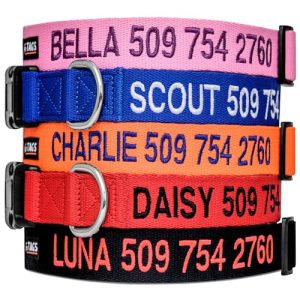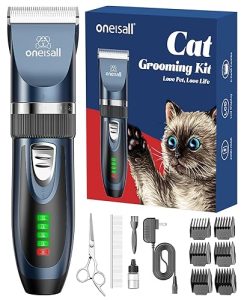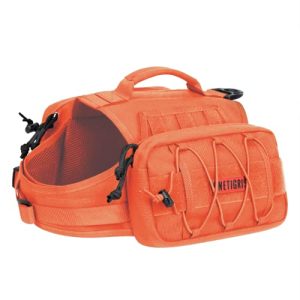If you want your dog to be safe and comfortable during walks, knowing how to wear a dog harness correctly is key. A well-fitted harness can make a big difference in your dog’s behavior and your peace of mind.
But if you’ve never used one before, it might feel tricky or confusing. Don’t worry—this guide will show you simple, step-by-step tips to help you put on a harness the right way. By the end, you’ll feel confident, and your dog will enjoy every walk even more.
Keep reading to discover how easy it is to get started!

Credit: www.familyhandyman.com
Choosing The Right Harness
Choosing the right harness for your dog is more than just picking a cute design. It directly affects your dog’s comfort, safety, and how well you both enjoy walks together. Understanding the different types, correct sizing, and material can make a noticeable difference in your dog’s behavior and your control during outings.
Types Of Dog Harnesses
There are several types of dog harnesses designed for different purposes and dog personalities. Some common styles include:
- Back-clip harnesses:The leash attaches on the dog’s back, ideal for calm dogs who don’t pull much.
- Front-clip harnesses:The leash attaches at the chest, helping to reduce pulling by steering your dog to the side.
- Dual-clip harnesses:These offer both front and back leash attachment points for versatile control.
- No-pull harnesses:Designed specifically to discourage pulling with unique tension systems.
Think about your dog’s walking style and training needs before choosing. Have you noticed if your dog pulls or stays close by your side?
Measuring Your Dog
Getting the right size harness is crucial. A harness that’s too tight can cause discomfort or skin irritation, while one that’s too loose might let your dog escape.
Measure your dog’s girth, which is the widest part of their ribcage, right behind the front legs. Use a flexible measuring tape and keep it snug but not tight. Also, check the neck circumference if the harness design requires it.
Remember, different brands can have varying size charts, so always compare your measurements to their guidelines. Have you ever struggled with harnesses slipping or rubbing your dog’s fur the wrong way?
Material And Comfort
The material of the harness affects both durability and your dog’s comfort. Look for harnesses made from breathable fabrics like nylon or mesh, especially for active dogs or hot climates.
Padding on the straps can prevent chafing, which is important if your dog wears the harness for long periods. Also, consider ease of cleaning—machines washable options save time.
Think about your dog’s skin sensitivity and activity level when choosing materials. Would your dog prefer a lightweight harness for summer walks or something sturdier for hiking adventures?

Credit: k9connoisseur.com
Preparing Your Dog
Preparing your dog for a harness involves gentle introduction and praise. Let your dog sniff the harness before placing it on. Adjust straps for a snug but comfortable fit to keep your dog safe.
Preparing your dog for a harness involves patience and understanding. Dogs often need time to adjust to new things. A harness can be confusing at first. Make the process smooth with some simple steps. This guide will help you ease your dog into wearing a harness.Introducing The Harness
Start by letting your dog see the harness. Place it on the floor and let them sniff it. This helps them get familiar with its scent and look. Avoid rushing this step; take your time. Praise your dog for any positive interaction with the harness.Positive Reinforcement
Use treats to create a positive association. Each time your dog interacts with the harness, reward them. This helps them connect the harness with good things. Keep the sessions short and fun. Consistency is key in building positive behavior.Getting Your Dog Comfortable
Once your dog is used to the harness, try putting it on. Be gentle and calm. Adjust the straps for a snug fit, but not too tight. Allow your dog to wear the harness indoors first. Monitor their reactions closely. Offer treats and praise to encourage them further. Gradually increase the time they wear it. Prepare your dog well for a successful harness experience.Fitting The Harness
Fitting a dog harness properly ensures your pet stays safe and comfortable. The right fit prevents chafing and gives you better control during walks. Follow simple steps to make sure the harness sits well on your dog’s body.
Placing The Harness Correctly
Start by identifying the front and back parts of the harness. Place the harness over your dog’s head or around the chest, depending on the style. Make sure the D-ring for the leash is on the dog’s back. Avoid twisting the straps or letting the harness sit crooked.
Adjusting Straps For Fit
Loosen all straps before putting the harness on. Tighten the straps slowly to fit snugly but not too tight. You should fit two fingers between the harness and your dog’s body. Adjust the chest and belly straps evenly to balance the fit.
Checking For Comfort And Safety
- Check for any rubbing spots or pinching areas.
- Watch your dog move to see if the harness stays in place.
- Ensure the harness does not restrict breathing or movement.
- Look for signs of discomfort like scratching or biting the harness.
A well-fitted harness keeps your dog safe and happy on every walk.

Credit: www.amazon.ca
Walking With The Harness
Walking with a dog harness offers better control and comfort for your pet. It reduces strain on the neck and helps guide your dog gently. The harness fits snugly around the chest and shoulders, making walks safer and more enjoyable.
Proper use of the harness during walks encourages good behavior and builds a strong bond. Start slow and make the experience positive with praise and treats. Patience is key to helping your dog adjust to the harness.
Attaching The Leash
Clip the leash securely to the harness ring. Check that the clip is locked in place. Use a leash length that allows freedom but maintains control. Hold the leash firmly but avoid pulling too hard.
Encouraging Proper Walking Behavior
- Keep your dog close to your side.
- Use a calm, steady voice to give commands.
- Reward your dog with treats for walking calmly.
- Stop walking if your dog pulls or lunges.
- Practice short walks to build good habits.
Handling Common Issues
Dogs may try to back out of the harness or scratch at it. Gently correct this behavior by redirecting their attention. Check the harness fit regularly to avoid discomfort. If your dog pulls, stop walking and wait for calmness before moving again.
Maintaining The Harness
Maintaining your dog’s harness keeps it safe and comfortable. Regular care extends the harness’s life. It also ensures your dog stays secure during walks. Neglect can cause damage, making the harness unsafe. Keep a habit of checking and cleaning it.
Cleaning Tips
Remove dirt and odors by cleaning the harness often. Use mild soap and warm water. Avoid harsh chemicals that can damage the material. Hand wash for best results. Rinse thoroughly to remove soap residues. Let it air dry completely before using it again.
Inspecting For Wear And Tear
Look closely at all parts of the harness. Check straps for fraying or weakening. Examine buckles and clips for cracks or breaks. Test the stitching to ensure it holds well. Replace or repair any damaged pieces immediately. Regular inspection prevents accidents during walks.
When To Replace The Harness
Replace the harness if it shows serious damage. Tears, broken buckles, or worn straps mean it is unsafe. Also, swap it if your dog outgrows it. An ill-fitting harness can cause discomfort and injury. Choose a new harness that fits snugly and supports your dog properly.
Frequently Asked Questions
How Do I Properly Fit A Dog Harness?
Measure your dog’s chest and neck before buying a harness. Adjust straps for a snug fit. Ensure it’s not too tight or loose to avoid discomfort or escape.
Can I Use A Dog Harness For Small Breeds?
Yes, harnesses suit all dog sizes. Choose a lightweight, adjustable harness designed for small breeds to ensure comfort and proper control during walks.
How Do I Put On A Dog Harness Correctly?
Place the harness over your dog’s head, then secure the straps around the chest and belly. Check all clips are fastened and adjust for a snug, comfortable fit.
When Should I Use A Dog Harness Instead Of A Collar?
Use a harness for better control, especially for pulling dogs or those with neck injuries. Harnesses reduce strain on the neck and prevent choking.
Conclusion
Wearing a dog harness keeps your pet safe and comfortable. Choose the right size for your dog’s body. Adjust the straps so they fit snug but not tight. Always check the harness before each walk. Let your dog get used to it slowly.
A well-fitted harness helps control your dog better. Walks become more enjoyable for both you and your pet. Remember, patience and practice make all the difference. Try these tips for a happy, safe walk every time.

Emily Barker is the founder of ChillDogLife.com, a space dedicated to helping pup parents discover the best dog products, lifestyle tips, and cozy ideas for happier homes.
A lifelong dog lover, Emily combines her passion for pets with a knack for research to share trusted recommendations on everything from toys and furniture to health and everyday care.
Her goal is simple: to make life easier, stylish, and more joyful for dogs and the people who love them.







